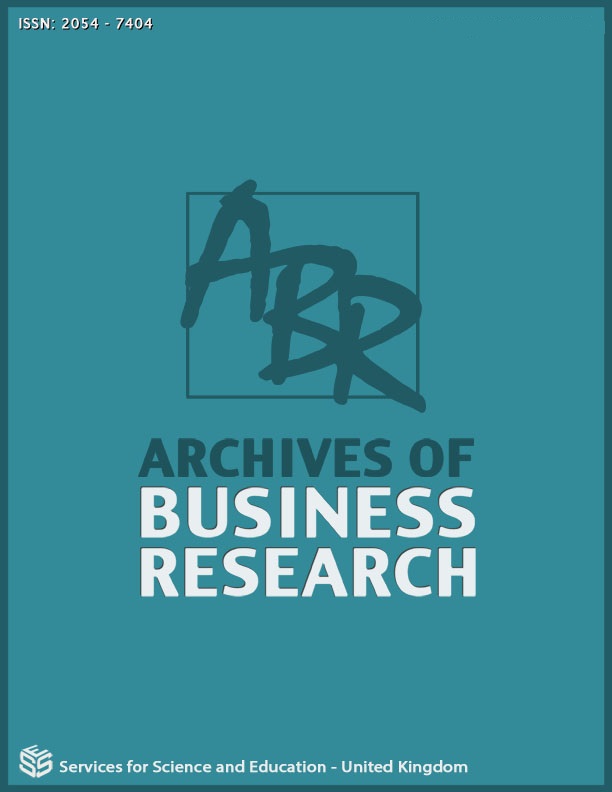S, Habiby The DSGE model and the optimal monetary rule
DOI:
https://doi.org/10.14738/abr.102.11618Keywords:
inflation targeting, credibility, economic growth, Neo Keynesian model, monetary ruleAbstract
Inflation targeting policy is a monetary policy framework that ensures a low inflation rate, close to an objective that is usually 2%. Due to deterioration of the relationship between monetary variables and aggregates in many economies, this policy is emerging as a new monetary strategy. Bank Al-Maghrib is part of this process, and thus Morocco has taken the first step in this direction by adopting a more flexible exchange rate regime. Nevertheless, the transition to this regime requires knowledge of the transmission of the interest rate on inflation and output.
In this article, we determine the optimal monetary rule to accomplish Morocco's transition to inflation targeting. We evaluate this rule by first constructing a DSGE model for a closed economy and then estimating through Bayesian estimation four sub-models (four monetary rules).
The comparison between models shows that the rule associated with inflation and output targeting with interest rate smoothing allows for better transmission of monetary policy. It is therefore the optimal monetary rule for the eventual implementation of inflation targeting policy in Morocco.
Keywords: inflation targeting, credibility, economic growth, Neo Keynesian model, monetary rule.
References
. Mishkin, F. S., & Schmidt-Hebbel, K. (2001). One decade of inflation targeting in the world: what do we know and what do we need to know? (No. w8397). National bureau of economic research.
. Woodford, M. (2003). Interest and prices: Foundations of a theory of monetary policy. Princeton university press.
. Clarida, R., Gali, J., & Gertler, M. (1999). The science of monetary policy: a new Keynesian perspective. Journal of economic literature, 37(4), 1661-1707.
. Galí, J. (2002). New perspectives on monetary policy, inflation, and the business cycle (No. w8767). National Bureau of Economic Research.
. Walsh, C. E. (2010). Using Models for Monetary Policy Analysis. International Journal of Central Banking, 6(1), 259-270.
. Mesonnier, J. S., & Renne, J. P. (2004). Taylor rule and monetary policy in the euro area. Banque de France.
. Iskrev, N., &Ratto, M. (2010). Analyzing identification issues in DSGE models. MONFISPOL papers.
. Zietz, J. (2008). A clarifying note on converting to log-deviations from the steady state. Economics Bulletin, 3(50), 1-15.
. Blanchard, O. J., & Kahn, C. M. (1980). The solution of linear difference models under rational expectations. Econometrica: Journal of the Econometric Society, 1305-1311.
. Klein, P. (2000). Using the generalized Schur form to solve a multivariate linear rational expectations model. Journal of Economic Dynamics and Control, 24(10), 1405-1423.
. Ruge-Murcia, F. J. (2007). Methods to estimate dynamic stochastic general equilibrium models. Journal of Economic Dynamics and Control, 31(8), 2599-2636.
. Canova, F. (2011). Methods for applied macroeconomic research. Princeton university press.
. Adjemian, S., Bastani, H., Juillard, M., Mihoubi, F., Perendia, G., Ratto, M., &Villemot, S. (2011). Dynare: Reference manual, version 4.
. Christiano, L. J., Trabandt, M., &Walentin, K. (2010). DSGE models for monetary policy analysis. In Handbook of monetary economics (Vol. 3, pp. 285-367). Elsevier.
. Daboussi, O. M., Chebbi, A., &Madouri, A. (2013). Inflation Targeting Policy: Pre-requisites and Opportunities for Tunisia. Science Journal of Economics, 2013.
Downloads
Published
How to Cite
Issue
Section
License
Copyright (c) 2022 salwa Habiby

This work is licensed under a Creative Commons Attribution 4.0 International License.






